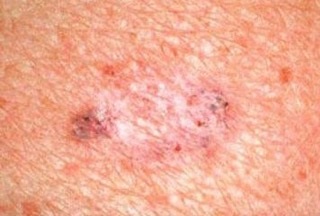September 13, 2017 | Stephen Fine, Founder and President
Melanomas with No Identified Primary Site
Most melanomas are initially discovered on the skin. However, in a small percentage (5%-10%) of people who’ve had a recent melanoma diagnosis, the disease has spread beyond their skin and into other organs or lymph nodes; with little-to-none of the initial blemish left visible.
Regression
Though the amount varies widely, to some extent we all have moles and skin growths. Occasionally, our immune system takes a disliking to one- and sets out to kill it. Once the body has set this ‘seek-and-destroy’ mission in motion the pigment, and thus the appearance and visibility of the targeted growth, slowly starts to dissipate. Sometimes, to the extent that a person can’t even tell that it was ever there at all.
If such a growth is benign (noncancerous) it’ll dissolve harmlessly. If it’s a malignant melanoma it is a real problem, and may be even more dangerous than the more traditional form of melanoma.
How can Regressive Melanoma be “More Dangerous” than Traditional Melanoma?
On the surface (so to speak) in and of itself regressive is not a deadlier version of melanoma. What makes it more dangerous though is that it’s much harder to see, and easier to misdiagnose, than a typical case. Melanoma is more often spotted by the patient than it is by his or her doctor. And the cure rate for melanoma is nearly 100% if it’s caught early enough. But regressive melanoma can metastasize (spread) without a patient even knowing it existed. Its remnants can be easily mistaken as nothing. And it’s totally natural for a medical layperson to assume that something “clearing up” is a good thing.
Our immune systems are a biological marvel; the lengths to which they go every day to protect us are truly extraordinary. Unfortunately, with regressive melanoma, their efforts to terminate cells that they believe to be harmful may be incomplete, allowing the disease to progress. In other words, they’re inadvertently helping melanoma conceal itself until it’s too late.
What can I do?
When performing your monthly skin self-exam, be sure to pay as much attention checking for moles and blemishes that appear to be fading unevenly, as you do to for those that are more visibly growing and changing. If either is found, schedule a dermatologist appointment quickly.
Here are two melanoma photos of both early and late-stage surface regression, presented respectively:


As can clearly be seen here, especially with the late-stage photo on the right, these blemishes appear to be healing. Healing marks of any kind tend to be disregarded.
That’s fine when it’s a simple, garden-variety bruise sustained from lightly bumping an arm against a countertop. But a fading skin growth, mole, or blemish should never be disregarded or ignored. They should be leant the same weight as any other suspicious change to the skin.
*Additional information sources: Melanoma Education Foundation (MEF) newsletter; Autumn 2015, Lloyd-derm.com
